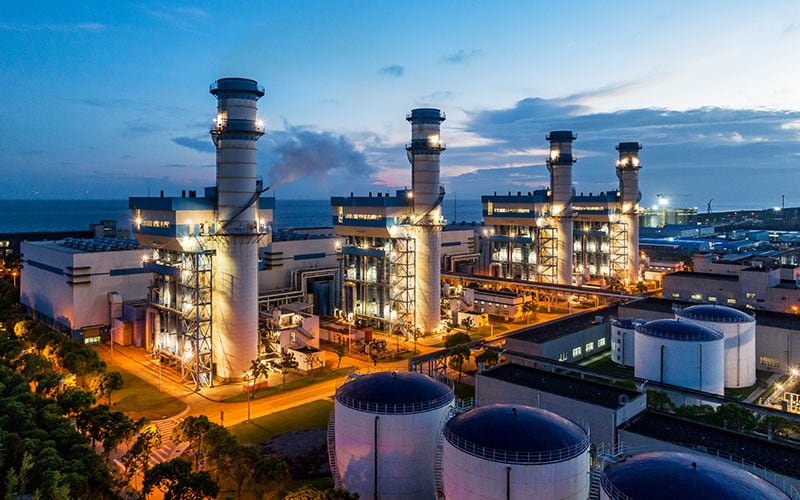Insights
- Hydrogen is a naturally clean fuel, but almost all of it (96%) was created via fossil fuels.
- There are relatively few hydrogen-powered passenger vehicles globally. Instead, hydrogen shows promise for trucks that carry heavy loads or travel in remote areas.
- Experts say that hydrogen may be most useful for decarbonizing areas that have resisted other decarbonization efforts.
- Hydrogen requires a great deal of energy to produce, which is why the use of renewable energy is critical to hydrogen role in the world’s energy transition.
- Much of the rush toward a new hydrogen economy is fueled by billions of dollars in government investments.
- Digital technologies, such as IoT, digital twins, and AI, are critical to making hydrogen a viable source of energy and reduce the carbon impact of its industrial uses.
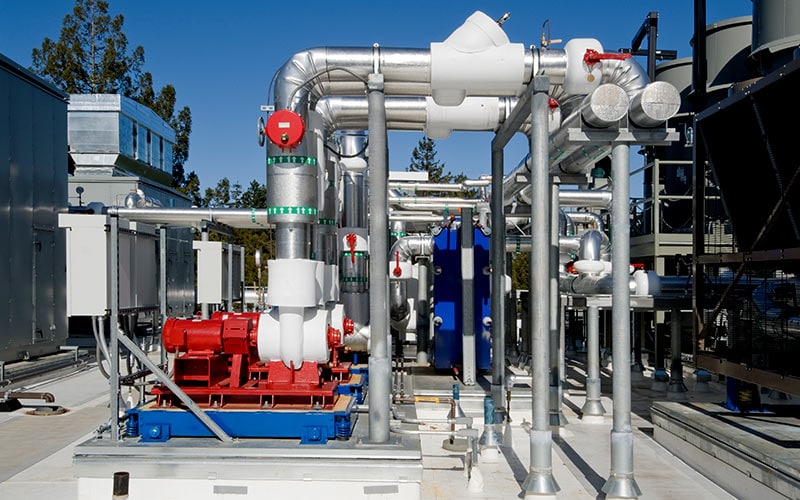
Interest in hydrogen surging
The transition away from fossil fuels and toward sustainable energy sources has always required an all-of-the-above approach to succeed. And hydrogen has long been recognized as both a problem and solution — one that would require billions of dollars of research and innovation to overcome its technical hurdles.
Twenty years ago, the International Energy Agency established a group to coordinate among national hydrogen research and development programs and policy strategies, from fuel-cell vehicles and distributed generation in remote regions to decarbonizing existing hydrogen production. The hydrogen economy, however, did not develop as quickly, widely, or as sustainably as many hoped, although interest is resurgent.
The world produces about 70 million metric tons of hydrogen each year for industrial uses that include petroleum refining and ammonia, methanol, and steel production. However, that 70 million metric tons results in 830 million metric tons of CO2 emissions, the equivalent of the United Kingdom and Indonesia combined.
Nearly all the world’s hydrogen (96%) was processed from natural gas, coal, or oil in 2021, according to the International Renewable Energy Agency. Just 4% was generated from splitting water into hydrogen and oxygen through electrolysis — and only a fraction of that from renewable energy sources. In all cases, these are energy intensive processes.
As a clean transportation fuel, hydrogen has also struggled to gain a foothold. In 2022, EV charging stations accounted for 83% of US alternative fueling stations. Hydrogen had just 72 fueling stations, or 0.1% of the nation’s total, according to the US Department of Energy. Despite hydrogen fuel cell costs falling by 70% in about a dozen years and strong recent growth, there were still only 72,000 of these vehicles globally. For comparison, more than 10 million electric vehicles were sold worldwide in 2022.
Even so, a new wave of interest in hydrogen is underway thanks in part to increased technological breakthroughs, investments by governments, and growing pressure to meet the Paris Agreement goals. The US government plans to invest $7 billion in regional hydrogen hubs in the next decade as part of an $8 billion effort to promote hydrogen use. Germany announced it would spend nearly that much ($7.6 billion) on green hydrogen. Also, plans are proceeding for a project in Saudi Arabia that would produce 600 metric tons of green hydrogen per day to create ammonia, making the plant one of the world’s largest hydrogen producers.
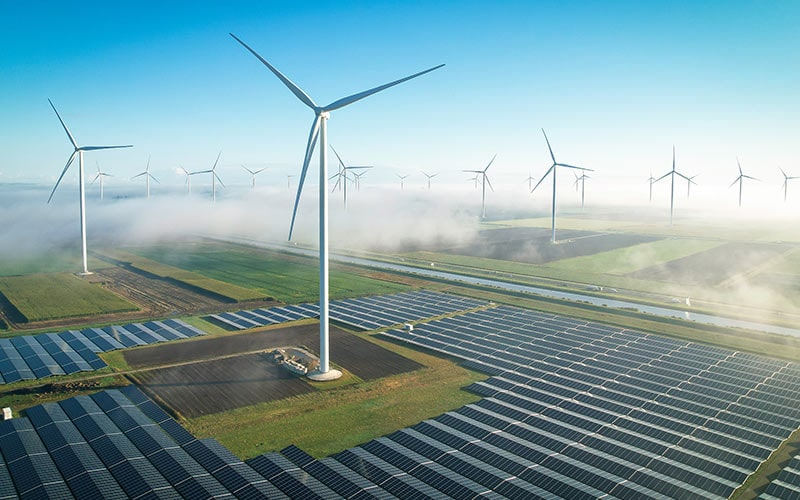
Hydrogen’s role in the world
Hydrogen has played little role in the world’s energy transition so far. Pressure is building though to change that dynamic, since hydrogen is such a critical product in many carbon-intensive industries. The graphic below shows a scaled-down version of hydrogen’s complex value chain (Figure 1).
Figure 1. Simplified hydrogen value chain
Source: Infosys
Significant barriers exist each step of the way in the value chain. The type of energy used and technology brought to the production process dictates whether the hydrogen actually reduces greenhouse gas (GHG) emissions. The energy intensity of the production determines whether the more sustainable hydrogen is cost-effective. Transportation is also costly due to hydrogen’s physical properties — it is highly flammable and prone to leaks. Finally, there are still hurdles to retrofitting end-uses to work with hydrogen rather than fossil fuels.
Despite all these hurdles — both current and future — multinational companies and national governments are investing billions of dollars into transforming the way we think about hydrogen.

Hydrogen is today enjoying unprecedented momentum. The world should not miss this unique chance to make hydrogen an important part of our clean and secure energy future.
Hydrogen’s role in industry
Hydrogen offers great potential to replace hydrocarbons as feedstock for some industrial processes and also produce energy for some carbon-intensive industries.
An article in the Journal of Industrial Ecology examined how hydrogen can be used as a reducing agent to replace coal in the production of iron. The researchers concluded that this approach — which requires significant investment — could reduce the iron and steel industry’s emissions by nearly one-third.
Also, the EU’s “HyInHeat” research project is examining the use of hydrogen to generate the high temperatures needed for the aluminum and steel industries. The project, which has 30 partners from 12 countries, is testing the efficiency of these processes and determining how existing furnaces and other equipment would need to be modified.
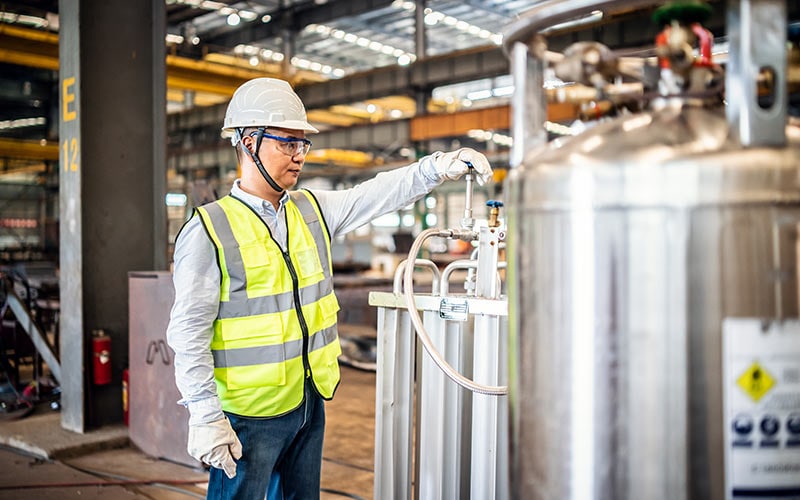
Hydrogen in electricity generation and storage
Much of the world’s electricity is generated by natural gas turbines, but hydrogen is an alternative. Entergy, an integrated electricity company with three million customers in the US, is building a power plant in Texas that can use either natural gas or hydrogen as fuel. This $1.5 billion project is under construction near the Texas Gulf Coast petroleum corridor and in a state that — if it were a country — would be the world’s third largest natural gas producer.
Similar projects could spread as governments limit power plant emissions. Although the burning of hydrogen does not create GHG emissions, the full impact on the atmosphere will be determined by how the hydrogen was produced.
Energy storage offers another opportunity — one that could supplement batteries, pumped-storage hydropower, and other less established solutions. The concept is the same with hydrogen as it is with other storage technologies, which is to offset the intermittent nature of renewable electricity generation. Companies can use electricity when it is plentiful and cheap (typically when wind and solar generate excess electricity) to create hydrogen through electrolysis. Then hydrogen can be converted back into energy when demand increases, either through fuel cells or combustion engines.
Hydrogen in transportation
Hydrogen is still a niche fuel source (or more accurately an energy carrier). But that is not necessarily a negative. Increasingly, experts look at hydrogen as a critical solution to fill in gaps in the world’s sustainability strategy. With the right planning, the plentiful but difficult to manage gas promises to help reduce emissions in areas where other efforts have faltered.
People rarely travel by hydrogen fuel-cell passenger vehicle, and less so ones with hydrogen-powered internal combustion engines. However, hydrogen could be useful in many other instances, such as heavy trucks that could drain electric batteries too quickly or trucks travelling in remote areas.
In the UK, BP has announced a major green hydrogen project and signed a memorandum of understanding with Daimler to use some of the hydrogen to power fuel cell trucks. More broadly, BP says publicly it wants the Teesside project to become a hub for decarbonizing trucking, airports, ports, and rail. This hub approach is particularly useful with hydrogen, which is more difficult and costly to transport than many other fuels.
Maritime hydrogen vessels exist, but just barely. A hydrogen-powered inland container ship, H2 Barge 1, launched this year and will take Nike products from the Netherlands to Belgium. This is expected to eliminate 2,000 tons of CO2 emissions from the sportswear giant’s carbon footprint. The first liquid hydrogen-powered ferry, Norled’s MF Hydra, began operating in 2023 in Norway. Also, the luxury cruise line Viking plans to launch new ships that use hydrogen fuel cells. Other cruise lines are also seeking fuel alternatives as ways to meet the Cruise Lines International Association’s 2050 net-zero goal.
In addition, aircraft manufacturers are working on hydrogen-powered airplanes, although those ambitions are more than a decade away. Airbus has a goal of developing the “world’s first hydrogen-powered commercial aircraft” by 2035. As of early 2023, the largest plane to run on a hydrogen fuel cell was a 19-seater. But just one of its two engines was hydrogen powered; the other was a kerosene engine.
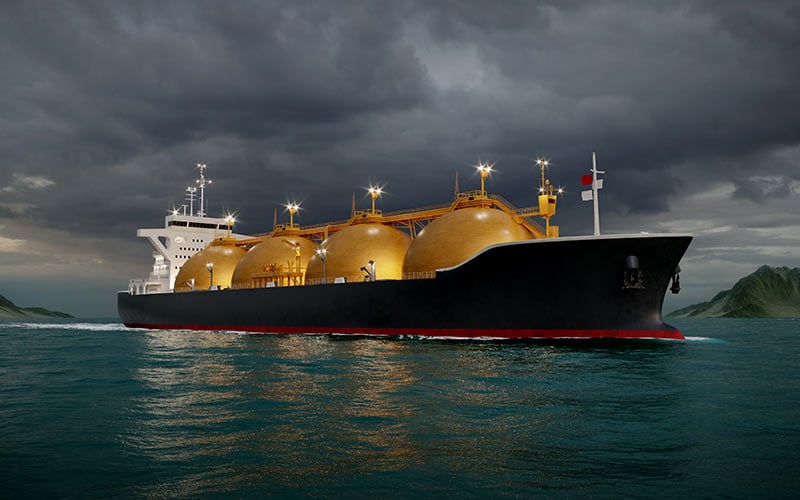
The hydrogen color spectrum
Hydrogen will play a critical role in energy transition, either in accelerating it or hindering it. The determining factor will be the color of the hydrogen, a categorization scheme that indicates the method of production, and as a result, the impact on greenhouse gas emissions. The most common color codes are white, gray, black, brown, pink, blue, turquoise, and green hydrogen.
White hydrogen — Naturally occurring underground and is not commercially extracted. Some companies, however, are searching for sources of white hydrogen despite significant skepticism that it will be commercially viable or be able to satisfy a significant percentage of industry demand.
Gray hydrogen — Produced from natural gas through the process of steam methane reforming (SMR). In this method, methane reacts with steam to produce hydrogen gas, carbon monoxide, and carbon dioxide. SMR also releases large amounts of GHGs into the atmosphere. This is also the most common method for hydrogen production.
Black and brown hydrogen — Uses bituminous coal (black) or lignite coal (brown) in the gasification process.
Pink hydrogen — Generated by nuclear energy-powered electrolysis, in which water is split into hydrogen and oxygen. This does not create GHG emissions, but the need to dispose of nuclear waste is still an environmental problem with this energy source.
Blue hydrogen — Also produced using SMR — like gray hydrogen. However, carbon capture and storage techniques seek to keep the emissions out of the atmosphere.
Turquoise hydrogen — Produced using a process called methane pyrolysis. Natural gas is heated to high temperatures, which breaks the methane down into hydrogen gas and solid carbon. The carbon can be captured and used for industrial applications.
Green hydrogen — Produced through electrolysis using renewable energy sources, such as wind, solar, or hydropower. Green hydrogen is the most environmentally friendly of the group and the focus of many of the new government hydrogen initiatives.
Despite the complexity, a similarity among these different processes is that they are all very energy intensive. That put a premium on the types of electricity used and technology and techniques needed to make the process more efficient.
The current rush to create new green hydrogen projects is a direct result of the increase in renewable energy capacity and decreases in their costs.
Barriers to hydrogen use
While hydrogen holds promise as an alternative fuel, there are several arguments and concerns raised by critics and skeptics that warrant consideration. These arguments highlight challenges and potential drawbacks associated with using hydrogen as a mainstream alternative to conventional fuels. Some of the key arguments against hydrogen as an alternative fuel include:
- Energy efficiency — The process of producing, transporting, and using hydrogen as a fuel is less energy-efficient compared to directly using electricity in battery electric vehicles. The conversion of energy from electricity to hydrogen, its transportation, and its conversion back to electricity in fuel cells result in energy loss.
- Carbon emissions from production — If hydrogen is produced using fossil fuels without carbon capture and storage, it can result in significant carbon emissions. SMR, the primary method of hydrogen production, generates carbon dioxide as a byproduct.
- Diverting investment — Hydrogen as a fuel competes for attention, resources, and investment with various other clean energy solutions, such as electrification, biofuels, and advanced propulsion technologies. Building a hydrogen infrastructure, including production facilities, storage, transportation, and refueling stations, requires significant investment that may be better directed toward more mature solutions.
- Energy storage challenges — Storing hydrogen requires specialized infrastructure and materials. Its low energy density by volume requires compression and liquefaction, which can lead to energy loss and safety concerns for the highly flammable gas.
- Supply chain issues — Hydrogen supply chain logistics, including production, transportation, and distribution, need to be developed and optimized. Critics question the feasibility of establishing a comprehensive and efficient hydrogen supply chain.
- Resource and land use — Hydrogen production requires significant amounts of water, particularly for electrolysis. This can pose challenges in regions with water scarcity.
- Scale and viability — Scaling up hydrogen production to meet demand for transportation, industry, and other sectors is a complex challenge. Skeptics question whether there will be sufficient supply of the cleaner versions of hydrogen to support broad adoption.
A practical approach to hydrogen’s problems and solutions
The hydrogen value chain, from production to distribution to end uses, faces challenges that impede its progress. However, supporters see clearly its potential as a clean energy solution and are confident that the environmental impact of its current production can be alleviated.
Not every grand promise attributed to hydrogen is possible, but many solutions are now within reach. The integration of digital technologies is rapidly transforming the hydrogen industry, addressing many of these challenges and ensuring that hydrogen’s impact on the world is a more positive one. But first, organizations need to know where to focus their efforts to unlock hydrogen’s full potential.
Optimized production
- Advanced process control — Digital twin technology enables real-time simulations of hydrogen production processes, allowing operators to optimize operations, minimize energy consumption, and reduce emissions.
- Predictive maintenance — Sensors and internet of things (IoT) devices can monitor equipment conditions, predicting maintenance needs and preventing costly downtime at hydrogen production plants.
Efficient storage and transportation
- Smart pipelines — The use of IoT and artificial intelligence (AI) in pipeline monitoring ensures the safe and efficient transport of hydrogen, detecting leaks or anomalies and enabling rapid response.
- Blockchain for transparency — Blockchain technology can be used to track the origin and quality of hydrogen, ensuring transparency and traceability in the supply chain. Spanish energy company ACCIONA Energía has launched what it calls the first blockchain platform to verify the transportation of green hydrogen.
Hydrogen infrastructure development
- Geospatial analytics — Location intelligence and geographic information system technology help identify optimal sites for hydrogen infrastructure, such as refueling stations or distribution hubs, based on demand and accessibility.
- Digital permitting and regulatory compliance — Digital platforms streamline the permitting process for hydrogen infrastructure development, reducing delays and administrative burdens.
Grid integration and energy management
- Grid balancing — AI-driven energy management systems can integrate hydrogen production with the electricity grid, balancing supply and demand while reducing grid instability caused by intermittent renewable sources.
- Demand forecasting — Machine learning algorithms can predict hydrogen demand, which allows for more accurate production planning and cost optimization.
Decentralized production
- Small-scale electrolysis — Compact and digitally controlled electrolysis units enable decentralized hydrogen production at the point of use. This reduces transportation costs and energy losses.
- Peer-to-peer trading — Smart contracts facilitate peer-to-peer trading of excess hydrogen production between distributed producers and consumers.
Data analytics and insights
- Big data analytics — Analyzing large datasets from sensors and devices provides insights into operational efficiency to enable continuous improvement in the hydrogen value chain.
- Lifecycle assessment — Digital tools assess the environmental impact of hydrogen production, which helps stakeholders make informed decisions about sourcing and usage.
Both boosters and skeptics of hydrogen as an energy source acknowledge that it must play a significant role in the world’s energy transition. The gas is needed for a wide variety of uses and often isn’t replaceable. And on our current path, it is a significant contributor to GHG emissions. Predictably, we are stuck with the universe’s most plentiful element.
It is now up to scientists, governments, universities, and businesses to determine how to untangle hydrogen’s complex value chain. Like any tectonic shift in the world’s economy, the hydrogen revolution will require scientific and engineering innovations, massive investments, and an analytical and practical approach to the role hydrogen plays globally.





